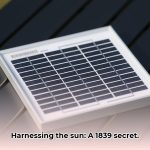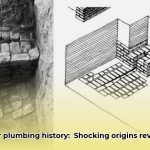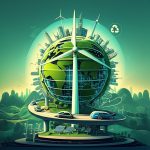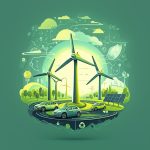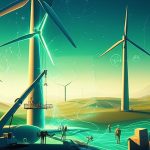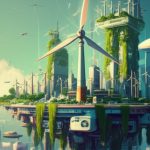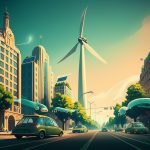Ever wonder how did Charles F. Brush discover wind energy technology? It wasn’t a sudden flash of inspiration, but a methodical journey fueled by a keen interest in electricity and a vision for harnessing nature’s power. Brush didn’t exactly “discover” wind energy – people had been using windmills for centuries – but he revolutionized how we use it, creating the first automatically operated wind turbine generator.
At a glance:
- Charles F. Brush built the first automatically operated wind turbine in 1888.
- His invention powered his home and demonstrated the potential of wind energy.
- Brush’s work laid the groundwork for modern wind turbine technology.
- He overcame skepticism to pioneer a sustainable energy source.
- Brush’s innovations continue to inspire advancements in renewable energy.
The Spark: Brush’s Early Fascination with Electricity
Born in 1849, Charles F. Brush displayed scientific curiosity from a young age. He wasn’t just a dreamer; he was a builder. He studied at Cleveland’s Central High School and later the University of Michigan, where he immersed himself in the study of electricity. This passion led him to significant contributions to the field, including the development of arc lights and dynamos, which would later become crucial components in his wind turbine. Brush even founded his own company, Brush Electric Company, to manufacture his inventions.
Brush’s era was one of massive change, electricity was improving lives but at the cost of burning lots of fossil fuels. [placeholder_link slug=”what-types-of-jobs-are-provided-by-wind-energy” text=”Wind energy brought new job opportunities”], and Brush, with his foresight, knew there had to be a better way.
From Arc Lights to Wind Power: The Pivotal Shift
Brush’s existing expertise in electrical systems was instrumental in his shift toward wind energy. He wasn’t starting from scratch; rather, he was applying his knowledge of dynamos and generators to a new challenge: harnessing the wind. By the 1880s, Brush was already experimenting with various generators, seeking ways to improve their efficiency.
The Birth of the Brush Windmill: A Practical Marvel
The year 1887 marked a turning point. Brush constructed a groundbreaking windmill near his Cleveland, Ohio, home. Completed in 1888, this wasn’t just any windmill; it was a sophisticated machine designed to generate electricity automatically. Imagine a 60-foot tower topped with a 17-meter diameter rotor—a truly revolutionary device for its time.
This windmill was capable of generating 12 kilowatts of electricity, enough to power his mansion and even some streetlights in downtown Cleveland. But it wasn’t just about power output.
Innovation in Every Blade: Design and Functionality
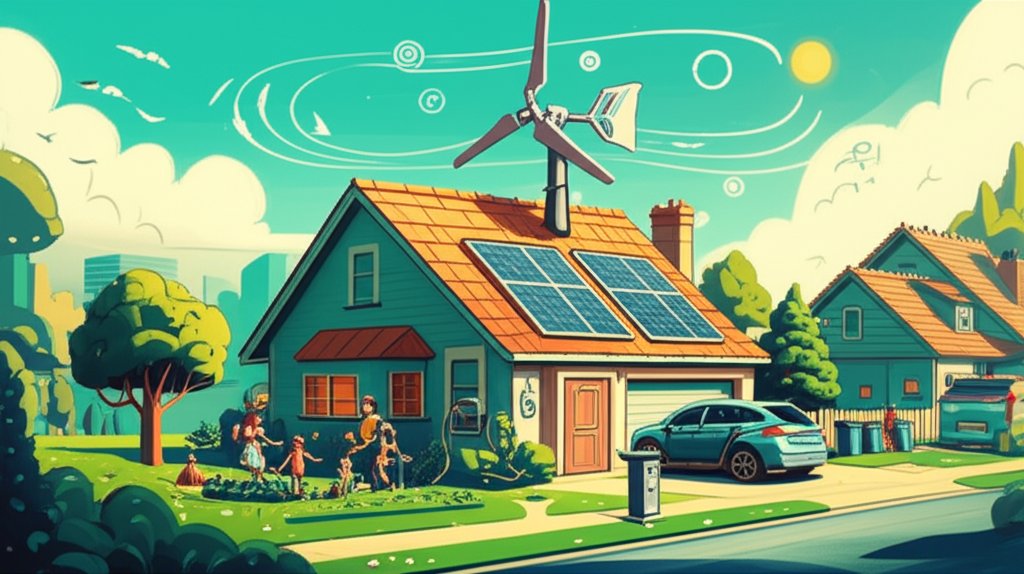
Brush’s windmill was more than just a large structure; it was a marvel of engineering. Several key features made it stand out:
- Multiple Blades: Unlike earlier windmills, Brush’s design featured a large number of blades (144 made of cedar). This increased the surface area interacting with the wind, allowing for more efficient energy capture.
- Automatic Furling System: This was perhaps the most innovative aspect. The system allowed the turbine to automatically adjust its angle to the wind, optimizing energy production and preventing damage during high winds. This automatic regulation was crucial for reliability and long-term operation.
- Direct Current Dynamo: The turbine was connected to a dynamo at the base of the tower, converting the rotational energy of the blades into direct current electricity.
Brush understood that for wind power to gain wider acceptance, its technological foundations needed to be solid. He meticulously documented his findings and tirelessly promoted the potential of wind energy as a primary power source.
Overcoming Skepticism: A Visionary’s Perseverance
Despite the clear benefits, Brush faced considerable skepticism from both the scientific community and the public. The idea of relying on something as unpredictable as the wind seemed impractical to many. Fossil fuels were the dominant energy source, and challenging that status quo wasn’t easy.
Brush persevered, driven by his belief in the potential of renewable energy. He continued to refine his windmill, creating variations suitable for powering homes and farms in rural areas. He wanted to take [placeholder_link slug=”residential-wind-energy” text=”harnessing home wind power”] and make it the future. This adaptability demonstrated his understanding of both the aesthetic and pragmatic aspects of engineering, blending form with function.
Showcasing the Future: The 1888 Cleveland Windmill Exhibition
Brush knew that visibility was key to gaining acceptance. In 1888, he showcased his wind generator at the Cleveland Windmill Exhibition, unveiling his vision to the world. The event wasn’t just a display of technology; it was a demonstration of what could be achieved by harnessing nature’s forces for human benefit. The sight of wind turbines generating clean energy was a tantalizing promise and a compelling invitation to explore further.
The Legacy: Inspiration for Generations

While Brush’s wind turbine wasn’t immediately adopted on a large scale, it became a prototype for future advancements. His pioneering work sparked enthusiasm and dialogue around renewable energy. He demonstrated that wind energy could be a reliable source of electricity, inspiring other inventors to experiment and improve upon his designs.
Answering Your Questions About Charles F. Brush and Wind Energy
Let’s tackle some common questions about Brush and his groundbreaking work:
- Did Brush invent the first windmill? No, windmills have been around for centuries, used for grinding grain and pumping water. Brush invented the first automatically operated wind turbine for generating electricity.
- How long did Brush’s wind turbine operate? It successfully powered his home for about 20 years, demonstrating its long-term reliability.
- What were Brush’s other notable inventions? He made significant contributions to the development of arc lights and dynamos, which were essential to the early growth of electrical systems. He patented over 50 inventions!
- Was Brush’s work immediately recognized and adopted? No, he faced skepticism and resistance, but his perseverance laid the groundwork for the modern wind energy industry.
- What happened to his original wind turbine? Unfortunately, the original turbine was eventually dismantled, but its impact on the field of renewable energy remains significant.
Beyond the Invention: Brush’s Enduring Impact
Charles F. Brush’s contribution to wind energy wasn’t just about building a machine; it was about demonstrating a possibility. Here’s why his legacy is so important:
- He proved the potential of renewable energy. Brush showed that wind could be a viable and reliable source of electricity, challenging the dominance of fossil fuels.
- He inspired future innovation. His work paved the way for the development of modern wind turbine technology, which is now a major component of the global renewable energy landscape.
- He emphasized the importance of automation. The automatic furling system in his turbine was a key breakthrough, making wind energy more practical and efficient.
- He combined practicality with aesthetics. Brush understood that technology should be both functional and visually appealing, an approach that continues to influence design today.
The Future Powered by Wind: Building on Brush’s Foundation
Today, wind energy is one of the fastest-growing sources of renewable energy worldwide, providing a clean alternative to fossil fuels. And it all started to some extent from that 60-foot windmill in Cleveland, Ohio. Brush’s work on electricity and wind turbines laid the groundwork for modern sustainable practices.
Wind energy is a sustainable source of energy that does not produce greenhouse gases. It’s also a cost-effective source of energy, and it can help to reduce electricity costs for consumers. Plus, wind farms can create wind energy jobs.
Take Action: How You Can Embrace Wind Energy
Inspired by Charles F. Brush’s pioneering spirit? Here are some ways you can contribute to the growth of wind energy:
- Support policies that promote renewable energy. Advocate for government incentives and regulations that encourage the development of wind farms and other renewable energy projects.
- Invest in renewable energy companies. Support businesses that are developing and deploying wind energy technology.
- Consider purchasing renewable energy credits. If you can’t install your own wind turbine, you can still support renewable energy by purchasing credits that represent the environmental benefits of wind power.
- Educate yourself and others. Learn more about the benefits of wind energy and share that knowledge with your friends, family, and community.
Charles F. Brush didn’t just discover wind energy, he envisioned its potential. By understanding his story and taking action, you can help build a future powered by clean, renewable energy.
- How Did Charles F. Brush Discover Wind Energy Tech? - November 19, 2025
- Wind Energy Vertical: Weighing the Pros and Cons of Wind Power - November 16, 2025
- How Much Energy Does a Wind Turbine Actually Create? - November 14, 2025





